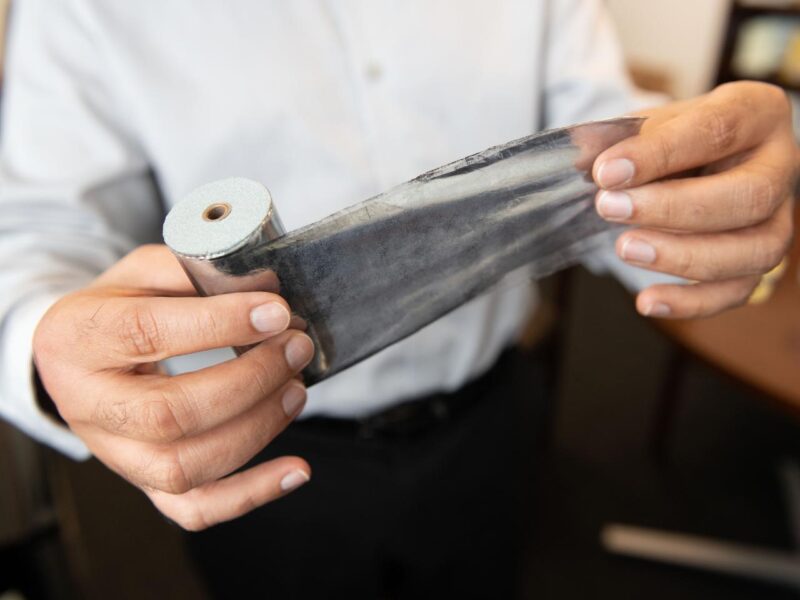
Better capacitors – a task for Machine Learning
The method, described in npj Computational Materials and sponsored by the US Office of Naval Research, involves teaching a computer to analyse two materials that make up some capacitors: aluminum and polyethylene.
The researchers focused on finding a way to more quickly analyze the electronic structure of those materials, looking for features that could affect performance. “The electronics industry wants to know the electronic properties and structure of all of the materials they use to produce devices, including capacitors,” said Rampi Ramprasad, a professor in the School of Materials Science and Engineering.
Polyethylene is a very good insulator with a large band gap, but if it has a defect, unwanted charge carriers are allowed into the band gap, reducing efficiency. “In order to understand where the defects are and what role they play, we need to compute the entire atomic structure, something that so far has been extremely difficult,” said Ramprasad. “The current method of analyzing those materials using quantum mechanics is so slow that it limits how much analysis can be performed at any given time.”
Ramprasad and his colleagues used a sample of data created from a quantum mechanics analysis of aluminum and polyethylene as an input to teach a powerful computer how to simulate that analysis.
Analyzing the electronic structure of a material with quantum mechanics involves solving the Kohn-Sham equation of density functional theory, which generates data on wave functions and energy levels. That data is then used to compute the total potential energy of the system and atomic forces.
Using the new machine learning method produces similar results eight orders of magnitude faster than using the conventional technique based on quantum mechanics.
“This unprecedented speedup in computational capability will allow us to design electronic materials that are superior to what is currently out there,” said Ramprasad. “Basically we can say, ‘Here are defects with this material that will really diminish the efficiency of its electronic structure.’ And once we can address such aspects efficiently, we can better design electronic devices.”
While the study focused on aluminum and polyethylene, machine learning could be used to analyse the electronic structure of a wide range materials. Beyond analysing electronic structure, other aspects of material structure now analysed by quantum mechanics could also be hastened by the machine learning approach.
“In part we selected aluminum and polyethylene because they are components of a capacitor, but it also allowed us to demonstrate that you can use this method for vastly different materials, such as metals that are conductors and polymers that are insulators,” said Ramprasad.
The faster processing allowed by the machine learning method would also enable researchers to more quickly simulate how modifications to a material will impact its electronic structure, potentially revealing new ways to improve its efficiency.
Related stories:
 If you enjoyed this article, you will like the following ones: don't miss them by subscribing to :
eeNews on Google News
If you enjoyed this article, you will like the following ones: don't miss them by subscribing to :
eeNews on Google News



